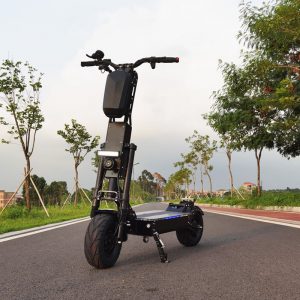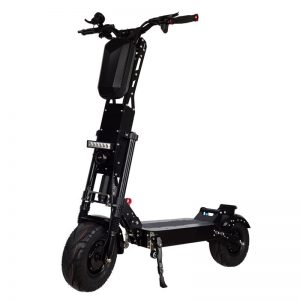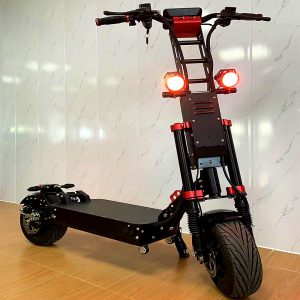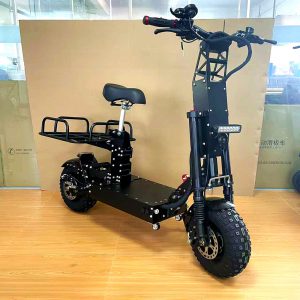Description
waterproof electric scooter
2 person electric scooter
electric scooter vespa
| Parameter | |
| Frame | High strength aluminum alloy 6061, surface paint |
| Forking forks | One forming front fork and rear fork |
| Electric machinery | 14 “84V 20000W brushless toothed high speed motor |
| Controller | 72V 150SAH*2 tube vector sinusoidal brushless controller (mini type) |
| Battery | 84V 90AH-150AH module lithium battery (Tian energy 21700) |
| Meter | LCD speed, temperature, power display and fault display |
| GPS | Location and two control alarm |
| Braking system | one disc, does not contain harmful substance, in compliance with international environmental requirements |
| Brake handle | Forging brake of aluminum alloy with power breaking function |
| Tyre | ZhengXin tire 14inch |
| Headlight | LED lenticular bright headlights and driving lights |
| Maximum speed | 125km |
| Extension mileage | 155-160km |
| Motor | 10000watt per piece |
| Wheel | 14inch |
| Net weight and gross weight | 64kg/75kg |
| Product size | L* w* h: 1300*560*1030 (mm) |
| Packaging size | L* w* h: 1330*320*780 (mm) |
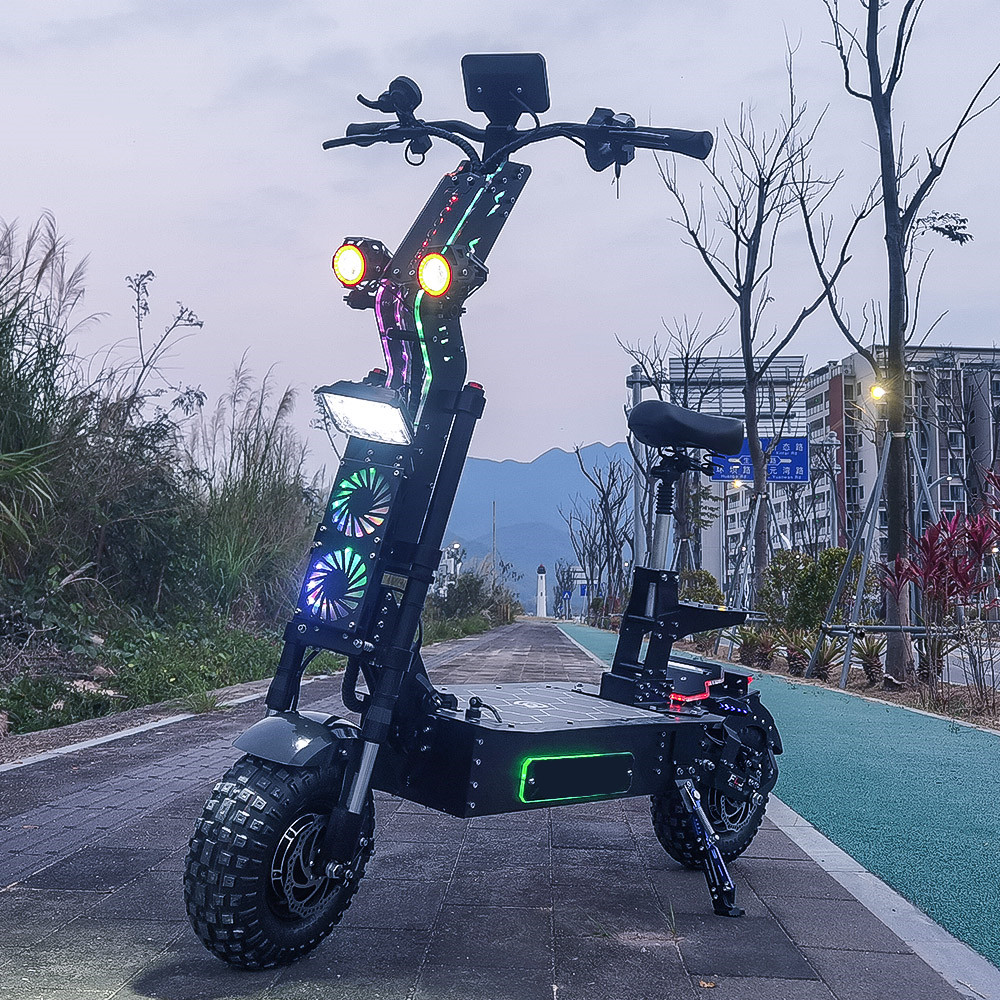
Wholesale Electric Scooters
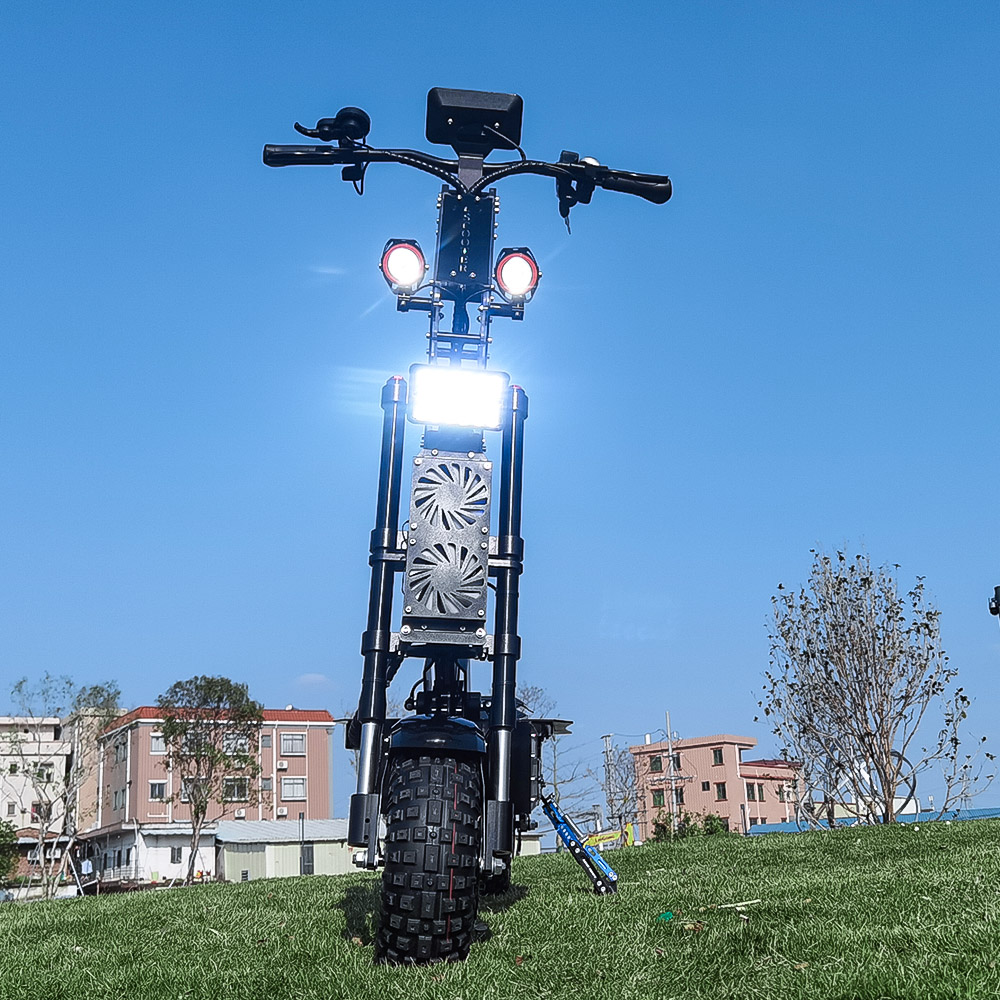
Scooter Electric Adult
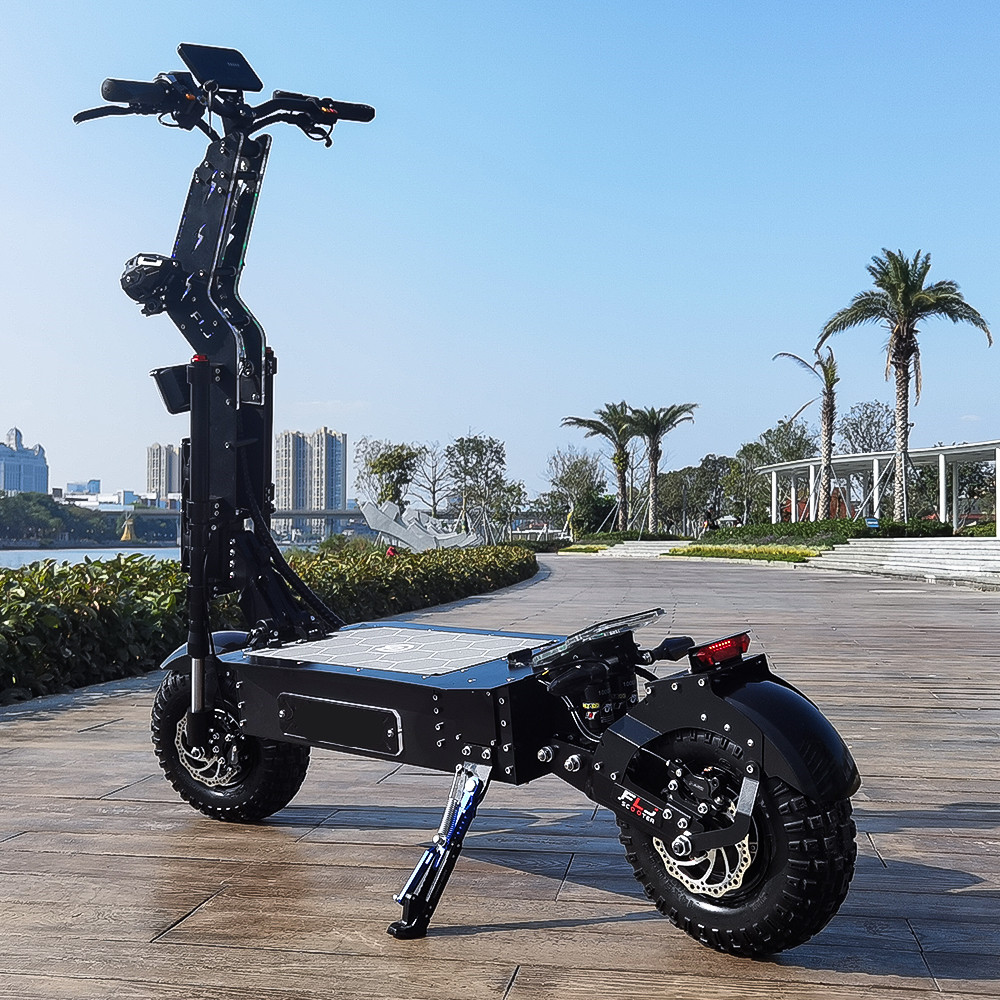
Patinetes Electricos Para Adultos
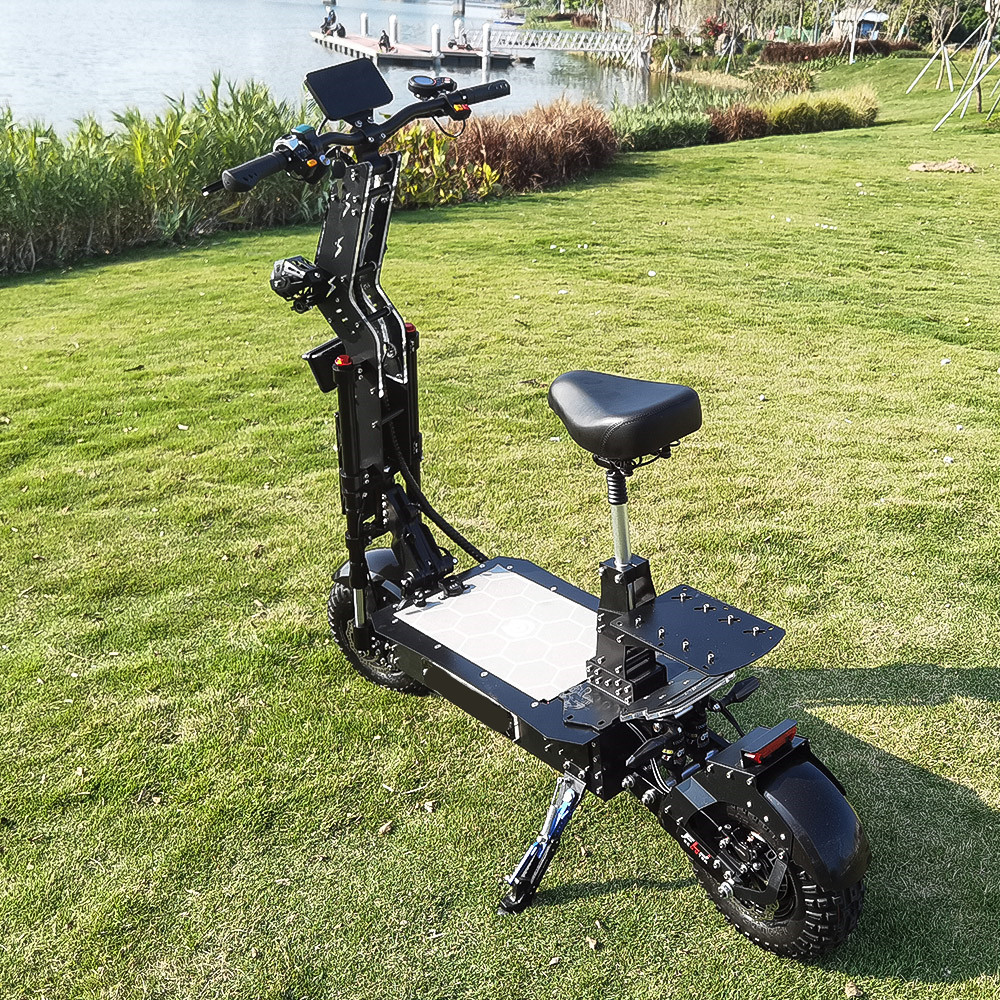
Off Road Electric Scooter
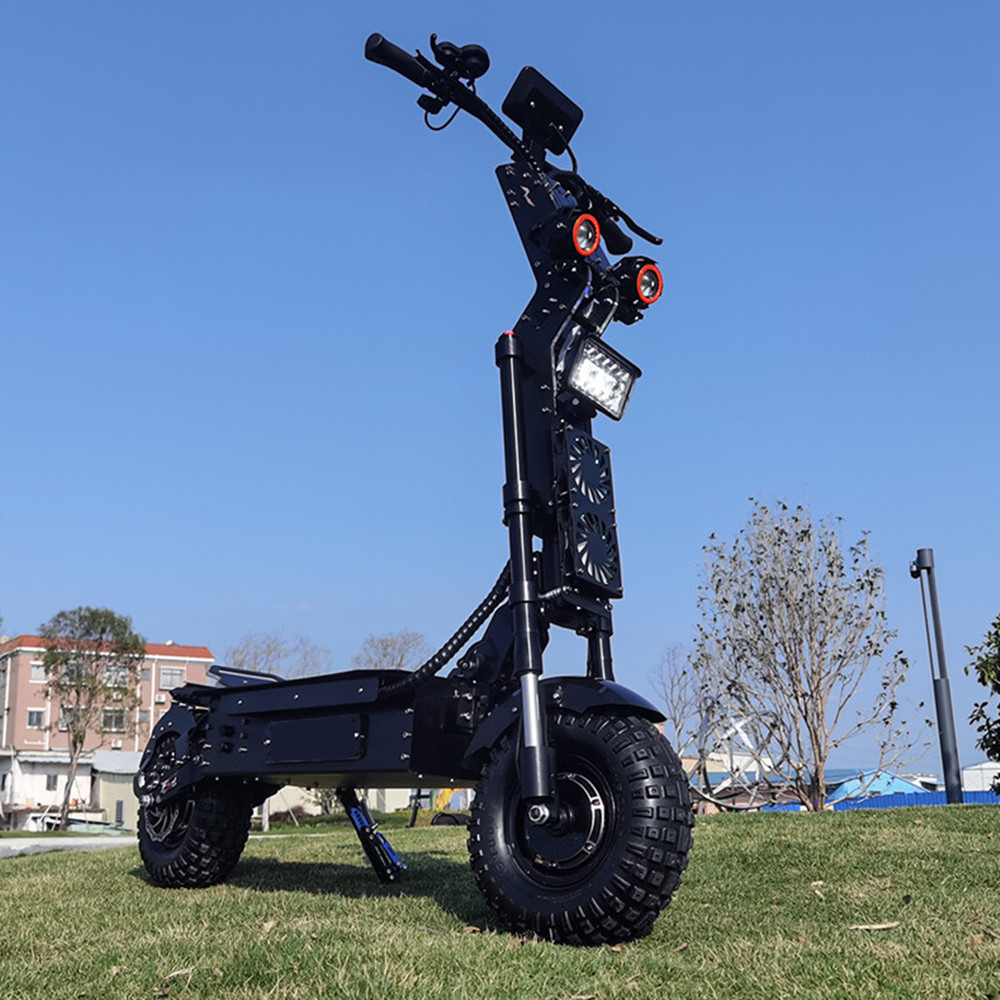
electric scooters 15kw
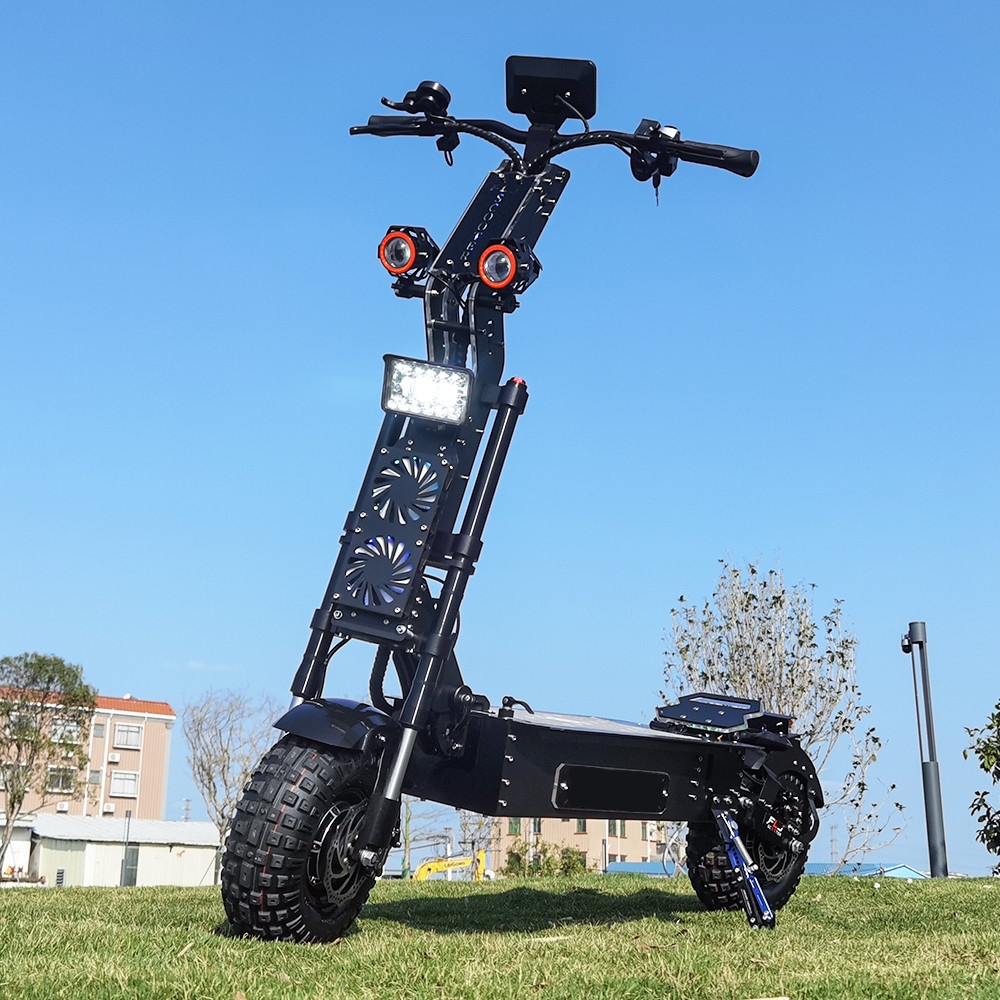
Electric Scooter For Heavy Person
If your gas-powered scooter isn’t starting using an electric starter, you’re probably desperate to find a solution which doesn’t involve taking your scooter to the shop or making expensive repairs. Your actions each affect a different component of the scooter, though. In this article, we’ll go over why your scooter might not be starting and give you a few tricks regarding what to do before taking it into the shop. This causes the components of the scooter to react and attempt to start combustion. The scooter’s components have to work together in harmony to both start and then to sustain the starting reaction to run. For your scooter to start successfully with an electric starter, your scooter needs to activate the components in the right order after receiving the correct input from you. Your input is to turn the ignition, to disable the engine kill switch, and to press the starter button. It’s important that you understand that your scooter’s engine has two different states: successful perpetuating combustion, and being off.
Unfortunately, problems with the compressor tend to be expensive to fix, and there’s little you can do yourself. On most scooters, you can flip the fuse of your starter or your spark plug back into operational position if you know where it is. Spark plugs are relatively cheap to replace, luckily. Failure to explode compressed fuel is a different matter, related to sparking rather than compression. If your engine is failing to compress fuel and you are using an electric starter, there will be a few symptoms that might point you in the direction of an electrical failure rather than a true compression failure, though. If your engine is sputtering but refusing to turn on fully, your battery may be low or dead. Like many electrical systems, your scooter has a set of fuses for each of the components that require electricity. Often there is an even simpler issue, however. If your spark plug isn’t sparking because it has broken, your engine can’t explode the compressed fuel. If your battery is low or dead, the pistons can’t compress the fuel enough to create an explosion that generates enough energy to restore enough power to the battery to repeat the process. If it’s blown entirely, you’ll need to replace it, which shouldn’t be expensive. If one of these fuses is tripped or blown for whatever reason, your scooter will behave as though it has a dead battery-you won’t hear any sputtering when you try to start it. If your attempt at starting your 14 inch scooter is met with only a small amount of sputtering, your spark plug may be the culprit-or your battery. Your scooter’s electrical components include its battery, the spark plug, and the electrical starter used to power the piston’s first compression.
Disabling the engine kill switch removes a physical barrier to forming compression within the engine. If your engine isn’t starting up but it’s making noises, it isn’t compressing fuel effectively. Now that we’re familiar with the way that things should work let’s look at where there might be problems that would prevent the process from becoming self-sustaining. You also need to make sure that the scooter has gas and that the battery isn’t drained, of course. Let’s go into more detail regarding the starting process so that you’ll be able to identify points of failure. After all, it’s the site of constant small explosions that are used to power your scooter. Pressing the starter button completes a circuit between the battery and the spark plug and also a circuit between the battery and the compressor, and turning the ignition opens the fuel valve. Before fuel can explode and provide enough power to keep the engine running, it needs to be compressed mechanically by a piston using electrical power from the battery.
Inspect with touch, smell, and sight. Is the temperature right? No damage? Unplug charger from outlet and plug it into the charger port. If you own another electric scooter, why not test the battery or charger on it? If your battery or charger ain’t defective and the components are fine, the charger port might be the reason why battery doesn’t charge. You may also want to check the place where you keep your e-scooter. Is the indicator light lit or blinking? Test battery and/or charger on another e-scooter. Damage to your electric scooter is another reason why battery doesn’t charge. Make sure your other e-scooter is compatible with the problematic battery or scooter. Check for battery leak. Inspect the wires and connectors going to the charger port. That way you will know if the battery doesn’t charge or the charger doesn’t work. Test the charger port. You can also test the charger port’s output voltage with the multimeter. If yes, then all is good. If your battery doesn’t charge, you can also blame it on the environment. Check for anything unusual like a smell of a burnt rubber or plastic, loose or disconnected wires and wire connectors, frayed wires, etc. Overuse and overcharging of e-scooter can cause components to malfunction and eventually burn or melt. Is the place free of rodents that might chew on your device. Over-using or over-charging your e-scooter may cause the battery to develop leak, which is why battery doesn’t charge. Is it near water sources or gas stove?
Your e-scooter’s battery doesn’t charge? Bummer! Almost every electric scooter user will experience issues with their device. If your battery doesn’t charge, you get no power and no mile. Generally, e-scooters are durable, built to last, and require little maintenance. If yes, then why the battery doesn’t charge? But while this is true, you should not wait until the last minute to fine tune your device. Indeed, a battery that unexpectedly does not charge and work properly is every user’s worst nightmare. The most common e-scooter issues are related to the battery packs, electric motor, and tires, but battery is the biggest issue of concern – and biggest worry – of users. E-scooter batteries are rated according to their amount of energy output in terms of voltage (V) and ampere hour (AH). Your electric scooter’s usability and integrity depend on how you operate and maintain it at certain times. You do always take good care of your e-scooter, don’t you?
So it is important to maintain and charge your battery regularly in order to maximize its usability. If you keep the same battery for more than two years, signs of defects should be showing, such as faster charging time, limited range and speed, low illumination of headlights (if your device has one), etc. A dying or worn-out battery doesn’t charge properly anymore, so this calls for replacement. A battery, like other parts and components of your electric scooter, is subject to life’s wear and tear. Either there is a charging problem, a drain on the battery pack, or simply your battery is becoming defective. Perhaps there is a damage or two to the battery pack or e-scooter. If you use your device everyday, then charge it everyday. Before you go to bed, plug your e-scooter in and let it charge for the night about 8-12 hours. For one, wear and tear. If your battery doesn’t charge, the problem could be one of the three things. What could make your battery pack go faulty?
If indicator light turns green after charging for a shorter period of time, the battery may not be fully charged, so continue charging for the full duration. 3. Next, plug the charger into your e-scooter’s charging port. It is okay to charge your device after each use even if the battery is not yet completely drained of its power. Refer to your user’s manual for the required charging time of your e-scooter. 4. Leave your device charged for the entire required duration. If it says 8 hours, then leave it charged for 8 hours. It must have the accurate voltage for your device. If your electric scooter runs on a 36V (three 12V) 7AH battery, then you need a 36V 1.6AMP charger. Make sure it is plugged correctly. 2. Plug the charger into a power outlet. Using the wrong charger is one reason why battery doesn’t charge. The indicator light should be red. The indicator light should be green. 1. Check if you have the correct charger.
When indicator light is green again, charging is complete. How long the battery is left uncharged? Test the charger. Faulty charger is one reason why battery doesn’t charge. Is the indicator light lit or blinking? To check if it is malfunctioning, plug charger into your electric scooter and power outlet. Check battery pack history. Battery doesn’t charge? Troubleshoot! You need to determine if either the battery or the charger is defective. Your e-scooters is ready for use. Voltage should be a few volts above the charger’s rated voltage (24V, 36V, or 48V). If the output voltage is zero or below voltage, then charger is defective. Check charger again with the use of a multimeter to test its output voltage. Just two days ago, last week, or more than 6 months? Unplug charger from outlet and charger port. If you have not charged it for more than 6 months, it is most likely to be defective. If not, the charger is defective. Battery should be charged after each use or every 30 days when in storage.
Do you drive your device over water or uneven or unpaved surfaces (cracks, potholes, bumps, etc)? Are you sure you are using the right charger for your electric scooter? You don’t over-charge, do you? Are you charging your device correctly? Charging issues? If your battery is not at fault, you probably have a defective charger or charger port. Certain riding activities and environment may have caused stress to your device’s parts and components, especially to the battery, wires, and other electric components inside your device. There could be a reason why your battery doesn’t charge and work properly. Are both charger and charger port working? Your electric scooter’s battery should be completely charged when the indicator light on the charger turns green after the required duration of charging (usually 8-12 hours for most e-scooters). This could be another reason why your battery doesn’t charge anymore. Do you perform extreme stunts with your electric scooter?
About battery voltage, electric scooters are typically configured in 24V, 36V, and 48V set-ups. On the other hand, an AH indicates an e-scooter’s range potential. Meaning, higher voltage e-scooters are faster than low voltage ones. Your electric scooter’s battery is a vital component of your device, regardless of model, make, style, and size. Generally, higher voltage means faster running speed. It measures a battery’s capacity or its amount of energy charge. If the battery doesn’t charge or work properly, your electric motor will not get the power it needs for the e-scooter to run. There are factors that can affect an electric scooter’s speed, such as rider’s weight, power and efficiency of motor, and type of terrain. Still, there are factors like rider’s weight and terrain, that can limit an e-scooter’s range potential. It should be that, but this is not always true. Higher AH rating means greater maximum distance. To know how far an electric scooter can go, check the AH rating. Why your battery doesn’t charge?

